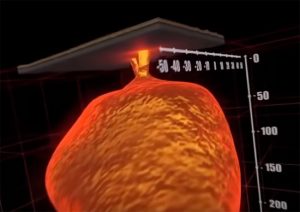“Europe’s First Civilization - The Minoans”
This video explains the sophisticated Minoan culture on the island of Crete, which predated classical Greece by more than a thousand years.
Following are points from the video:
— The Minoans who lived in the Island of Crete in the Mediterranean Sea during the Bronze Age were the first Europeans to form an advanced civilization, leaving behind sophisticated architecture and artwork.
— They were a part of a trade network throughout the Mediterranean region, and their “golden age” was a thousand years before the village of Rome was even founded.
— They mostly disappeared from history until relatively recently. Most of their writing cannot be deciphered.
— The Greek myth of Minos is explained, where the hero Theseus slayed a man-eating minotaur and escaped a labyrinth.
— The Minoans were named by the British archeologist Sir Arthur Evans, who discovered the civilization in the early 1900’s.
— It is not known when the Minoan civilization actually began since the island was inhabited for many thousands of years before the Minoan Golden Age, but the ancient Minoans are genetically very similar to the modern-day inhabitants of the island as well as other Europeans.
— The “Prepalatial Period” spans from 3,500 BC to 1,900 BC, with its starting date being chosen since it corresponds with the beginning of the Bronze Age. The period is defined by types of pottery styles and architecture that have been discovered. It was a time that is prior the elaborate palaces that were later built. The Minoans traded heavily with the surrounding cultures during the Bronze age such as Egypt and Mesopotamia, and they adopted the emerging technologies of those regions as well.
— The “Protopalatial Period” spans from 1,900 BC to 1,750 BC, when they built elaborate palace structures on the island, in particular three large main palaces. The palaces had multiple levels, many rooms, and they incorporated sophisticated plumbing, however is it not known exactly how the building were used.
— “Neopalatial Period” spanned from 1,750 BC to 1,450 BC, being the “Golden Age” of the Minoans, when they developed the first writing system in Europe, however no modern people are able to decipher the writings.
— The archeologist Sir Arthurs Evans made mistakes during his excavations that modern archeologists would no longer make, such as attempting to artificially restore elements such as frescos.
— The political structure of the Minoan society is not known, but no dominant authority figure is depicted in their artwork as it was in other civilizations on the region. Women might have had a prominent administrative role in the society, based on how they are depicted in the artwork.
— The Knossos palace is the largest, and Knossos is likely the first European city. The island was not unified where different languages were spoken in different regions, however they apparently led a connected and peaceful existence due to the lack of walls and fortifications.
— By about 2,000 BC, the Knossos region had a population of about 18,000 people.
— Many of the palaces were destroyed by earthquakes, but they were rebuilt. By 1,700 BC, the population of Knossos grew to 100,000, and to sustain such a population they developed advanced plumbing systems with sewers to expel waste from the cities, aqueducts to bring water in, cisterns to store water, and clay filters to treat it.
— A clay tablet called “The Phystos Disk” was discovered that contains impressions of symbols that were created using stamps, which is the first example of writing being created in such a manner.
— They grew numerous fruits and vegetables on the island, and raised animals such as bees, goats, and cattle.
— Cattle were very important to the Minoans, and they were likely sacred to them.
— Much artwork such as frescos and sculptures depict a “bull leaping” sport, where people are shown performing dangerous acrobatic acts involving being thrown upward by a bull’s horns, somewhat similar to what cowboys do in the American West. Both men and women are depicted engaging in the sport.
— The Minoans apparently worshipped goddesses that are depicted on ceremonial objects and grave goods, and religious symbols such and the Egyptian Ankh exist, but their religious practices are not known for certain.Their artwork often depicts scenes from the natural world, such as scenes of fish and dolphins. They also depict a double-headed axe called a labrys, however it is never depicted being wielded by males, which may indicate that their central deity was a goddess. The labrys that have been discovered apparently only had symbolic meaning since they would have been ineffective as weapons.
— They did not construct grand temples to their gods, but rather they built smaller religious centers. It is possible that some of their gods were incorporated into later Greek mythology, specifically Artemis who was the Greek goddess of mountains and hunting.
— Some evidence of human sacrifice and even cannibalism exists, but its extent and purpose is not known. The dating of the discoveries suggest that it may have occurred due to the environmental catastrophes that later befell the people on the island.
— The Minoans ruled in a “Thalassocracy”— meaning “sea empire,” where they heavily traded with the other cultures of the Bronze age including mainland Greece, the Levant, and Egypt. The imported raw materials onto the island and exported finished goods such as bronze.
— Despite their heavily influence, they did not place emphasis on having a military, where they lived during a long period of peace. They likely maintained an effective navy, however.
— About about 1,550 BC their civilization entered a period of decline, and their civilization came to an end at about 1,450 BC.
— The island of Santorini which lies to the north of Crete is an active volcano which erupted between 1,600 BC and 1,500 BC, being one of the largest eruptions in human history. The eruption likely caused a massive tsunami that struck Crete, which might have even been 100 feet high.
— Even though many Minoan sites actually survived the volcanic event, the catastrophic collapse of the civilizations in that part of the world destroyed the economy of the island due to them no longer having trading partners, and crops in the region were destroyed for years.
— It is speculated that most Minoans migrated elsewhere in the region away from Crete. A few hundred years later in 1,400 BC, many Minoan palaces were destroyed by fire, which ended the “golden age” of the Minoans.
— The area was eventually re-settled by the Mycenaeans who took over administering the island. The Mycenaeans learned a lot from the Minoans, and they brought the knowledge back to mainland Greece.
— The last known Minoan settlement that is known as Karfi dates to 1,250 BC, and after that their culture disappeared.
Article Tree
| A Summary of the History of the World, in Videos |
| THE GREEK ERA |
| Video: “Europe’s First Civilization - The Minoans” |








